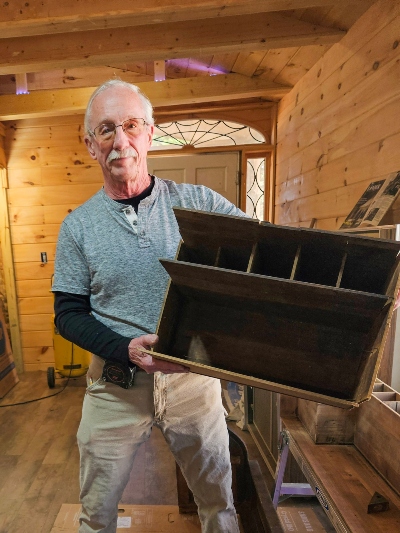Generous Gesture: Founder’s family bestows writing desk to Lander in honor of legacy
February 12, 2024Great leaders and thinkers generally have one piece of furniture in common – a desk where they plan, create and dream.
Thomas Jefferson designed a portable lap-desk for writing the Declaration of Independence. The desk traveled with him between his home in Virginia and Philadelphia, where independence was declared in 1776.
Author Ernest Hemingway preferred to stand when he wrote. His typewriter was perched on top of a bookcase in his bedroom.
Inventor Thomas Edison was a fan of the rolltop desk, with its many cubbyholes and small nooks and crannies holding notes and ideas for his discoveries, along with memorabilia.
Lander University founder, the Rev. Samuel Lander, too, used a roll-top desk for his work at Williamston Female College, the predecessor institution to Lander University.
The notes, letters and sermons – written in the Rev. Lander’s beautiful, elegant script — are stored in the archives of the Jackson Library on Lander University’s campus and are a testament to the countless hours he spent at his desk.
Now, the antique desk, where academic history was made, will have a home at Lander University, thanks to Dr. David Lander Henderson, of Greenwood, the great-grandson of the University’s founder and a former dean of the College of Education. Henderson recently gifted the desk to the University on behalf of members of the Lander family. The gift comes as Lander is observing the 152nd anniversary of its founding on Feb. 12, 1872.
The desk is being restored by master craftsman Terry Powell, a former Lander employee who also created the 23-foot-tall gazebo on the University’s campus. Dedicated in 2014 to celebrate Lander’s 110th anniversary in Greenwood, the gazebo is a replica of the one at Mineral Spring Park in Williamston where students from the original college would go to spend their free time and have picnics.
Believed to be made of oak, the desk is five feet long and 32 inches wide. Powell has studied the intricacies of the desk, including the drawers, cubbyholes and wheels that allowed the desk to be moved when necessary.
The desk was missing the “rolltop” feature which allowed people to work and hide the contents of the desk from view. To bring the desk back to its original design, Powell ordered a rolltop to be added to the desk.
“The rolltop was important. People could work at their desk, roll the top down when finished and lock the desk until they were ready to use it again,” said Powell. “It was a good design and very popular from the mid-1800s to today. People still use these desks at work and in their homes.”
Powell, who has spent more than 55 years as a wood craftsman, said the desk is a labor of love. “I think about Samuel Lander working at this desk as I am working on it. I feel like I have his DNA on me.”
The desk is expected to be completed later this year and will be unveiled for students and the public to view.



















